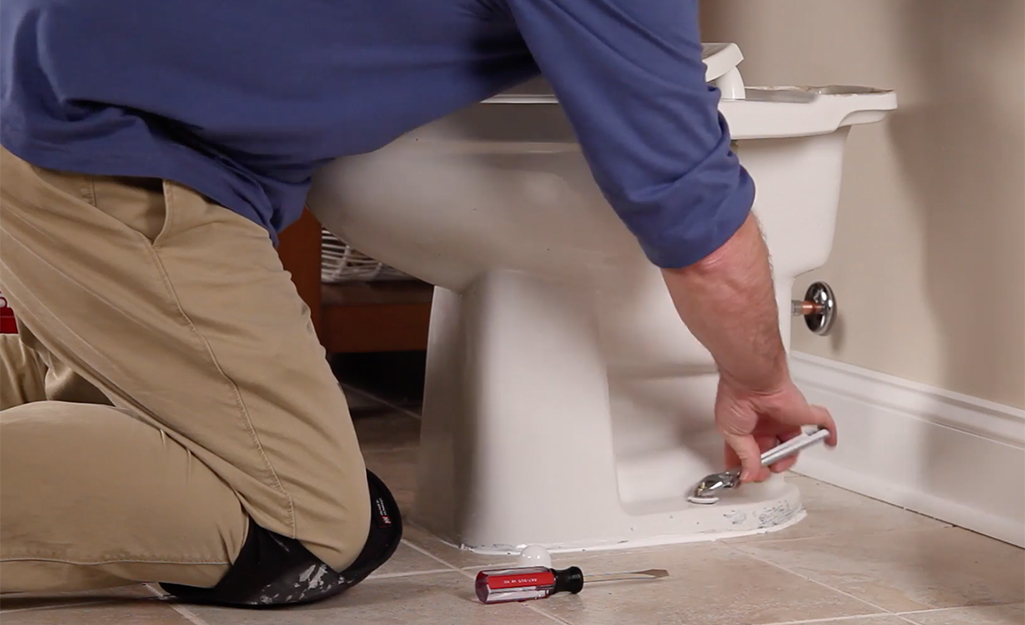Have you ever been in a public restroom and noticed that the toilets aren’t bolted down? It may seem insignificant, but it is actually very important. Toilets should be securely attached to the floor for health, stability, and convenience reasons.
Imagine this: You are in a public restroom, and you sit down on the toilet. Suddenly, it started moving across the floor. This can be embarrassing and even dangerous if someone slips or trips over the moving toilet. Bolting toilets to the ground is an effective way to prevent this from happening.
Not only does bolting toilets help with safety issues, but it also increases stability. No matter how much weight is put on a toilet, it will remain firmly in place. This means that your bathroom experience will be much more pleasant since there won’t be any shifting or wobbling when you sit on it.
Additionally, bolting toilets makes them easier to clean and maintain. Without being secured to the floor, cleaners would have trouble reaching all areas of the toilet bowl for proper cleaning, making hygiene standards suffer as a result.
However, by bolting them down, they become more accessible and easier to keep clean, which has improved hygiene standards overall.
If you’ve ever wondered why toilets should be bolted to the floor, now you know why! Safety concerns, improved stability, and better maintenance are just some of the reasons why this seemingly small detail is so important.
Contents
- 1 Should You Secure Your Toilet to the Floor?
- 2 Why Toilets Should Be Bolted To The Floor?
- 3 Hardware Needed To Bolt A Toilet To The Floor
- 4 How to Install a Flange on the Floor
- 5 Types of Fasteners Used to Bolt A Toilet to the Floor
- 6 Tips for Installing a Toilet Securely to the Floor
- 7 Benefits of Securing a Toilet to the Floor
- 8 Common Mistakes When Installing a Toilet Securely to the Floor
- 9 Conclusion
Should You Secure Your Toilet to the Floor?
Securing your toilet to the floor is an essential part of the installation process and should not be overlooked.
If it is not done correctly, it can lead to serious damage to your bathroom as well as potential health risks for those using the restroom.
Thankfully, there are several different methods for securely attaching a toilet to the ground, each with their own advantages and disadvantages.
The most popular way to attach a toilet is by using bolts and screws.
This method is simple to install and provides a strong connection between the toilet and floor.
When installing bolts and screws, make sure they are properly secured with nuts and washers so that they remain tight over time without loosening due to vibration or wear and tear.
Strapping or adhesive are other viable options for securing a toilet. Straps offer an extra layer of protection, while adhesive can be used as a quick fix if you don’t have access to tools or hardware.
Regardless of which option you choose, make sure it is installed correctly so that your toilet remains safe and secure.
Why Toilets Should Be Bolted To The Floor?
Securing your toilet to the floor is essential for maintaining a safe and efficient bathroom.
Bolting it down can help ensure that it remains stable and secure, as well as reduce water waste and improve flushing results. Here are some of the main reasons why toilets should be bolted to the floor:
- First, bolting a toilet to the ground will help maintain stability and safety. An unsecured toilet can lead to accidents due to shifting or wobbling, so bolting it down will provide an extra layer of protection. It also makes cleaning easier since you don’t have to worry about it moving during the process.
- Second, securing a toilet in place helps conserve water. This prevents any leaks or drips from occurring due to an unstable toilet, which can save money in the long run.
- Finally, bolting a toilet down will also increase its flushing rate. An unsecured toilet can result in inconsistent flushing results, so by securing it in place, you can ensure that everyone has a positive experience when using the same toilet often.
Overall, bolting your toilet to the floor is an important step in making sure your bathroom is safe and efficient. Not only does it provide stability and security, but it also helps conserve water and improve flushing efficiency.
Hardware Needed To Bolt A Toilet To The Floor
Before you start, make sure you have all the right components. Toilet bolts, nuts, and washers, a floor flange, screws, pliers or an adjustable wrench for tightening the bolts, and caulk or putty are all necessary for sealing the toilet.
Installing your toilet is straightforward.
Begin by attaching the floor flange with screws. Then place your toilet over the flange and secure it with toilet bolts.
Use nuts and washers to keep everything in place. Tighten any of the components together using pliers or an adjustable wrench.
Finally, apply caulk or putty around its base for a watertight seal between your toilet and the floor.
Don’t be intimidated by this project; it’s easier than you think! Just make sure you have all of the necessary hardware before starting.
How to Install a Flange on the Floor
Installing a flange on the floor is an essential step in securely attaching your toilet to the floor. It may seem intimidating at first, but with the right tools and a few simple steps, it can be done quickly and easily.
To start, measure and mark the location of the flange on the floor. Then, use a drill and masonry drill bit to make pilot holes in the marked area. Next, insert plastic anchors into each of the pilot holes and tap them into place with a hammer.
Finally, place the flange over the anchors and use screws to secure it in place.
That’s all there is to it! With just a few simple steps, you’ll have your flange installed on your floor in no time. So don’t be intimidated by this task; simply follow these instructions, and you’ll be good to go.
Types of Fasteners Used to Bolt A Toilet to the Floor
When building a new toilet, the first step is bolting it to the floor.
To do this, there are several types of fasteners that can be used. The most popular choice is lag bolts, which are long, threaded screws with a hex head and provide a secure connection.
Carriage bolts have a smooth finish and are great for aesthetic purposes, but don’t offer as strong of a connection as lag bolts.
Toggle bolts require drilling into the floor and offer an extremely secure connection, but can be difficult to install in tight spaces.
Masonry anchors are designed specifically for bolting into concrete floors and provide superior strength and durability compared to other types of fasteners.
Each type of fastener has its own advantages and disadvantages, so it’s important to choose the right one for your needs.
Lag bolts are usually the best option for bolting a toilet to the floor because they provide the most reliable connection and are simple to install.
Tips for Installing a Toilet Securely to the Floor
Installing a toilet securely on the floor is an essential task for preventing water damage and ensuring the toilet is stable. Here are some tips to help you do it right:
- Firstly, make sure you have the correct hardware. You’ll need screws, washers, and lag bolts to bolt the toilet to the floor. Measure twice before drilling any holes to guarantee a level installation.
- For a secure fit, make sure your bolts are long enough to go through both the flange and the subfloor.
- After it’s been locked in place, use a level or plumb bob to check if everything is level.
If there are any gaps between the floor and toilet, use shims to fill them in order to make sure it’s securely attached.
Benefits of Securing a Toilet to the Floor
A toilet can be an ideal way to upgrade the look and functionality of your bathroom. Bolting it to the floor offers several benefits, such as increased stability, a reduced risk of leaks, improved aesthetics, and easier cleaning.
Increased stability is a major benefit of securing a toilet to the floor. This makes it less likely to wobble or move when in use, especially in households with young children or elderly people who are more prone to slipping and falling.
Another advantage is that bolting your toilet to the ground reduces the risk of water leaking from its base. This helps create a tighter seal between the floor and the toilet bowl, minimizing any chance of water seeping out.
Furthermore, bolting a toilet to the floor can improve its overall appearance by making it blend in with the surrounding flooring.
Lastly, it makes cleaning around and beneath it much simpler since you don’t have to worry about moving it every time you want to clean underneath.
Common Mistakes When Installing a Toilet Securely to the Floor
Installing a toilet securely on the floor is essential for any bathroom. However, it’s easy to make mistakes that can lead to injury or water leaks. Here are four common mistakes you should avoid when bolting a toilet down.
Firstly, make sure you’re using the right hardware. Using the wrong type of bolts can cause damage to your floor or make the toilet unstable over time. It’s recommended that at least four bolts be used to ensure it won’t move around or become loose in the future.
Secondly, check that the toilet is level before securing it. Use a spirit level or other tool to ensure it is level and won’t cause water leaks in the future.
Thirdly, don’t forget to use sealant around the base of your toilet. This will help prevent water from leaking out and causing damage to your flooring or other areas of your home.
By following these tips, you can make sure your toilet is installed correctly and safely.
Conclusion
To sum up, bolting a toilet to the floor is an essential task that should not be overlooked.
It provides stability and security, conserves water, and improves flushing quality. There are several different ways to fasten a toilet to the ground, each with its own advantages and disadvantages.
To ensure a safe installation, it’s important to have the right equipment and follow all of the steps correctly.
With a few simple steps and the right equipment, you can quickly bolt your toilet to the ground like a pro.





